This is the transcript for Book One, episode 4 of The Lion and the Sun podcast: The Majlis Bombardment. Listen to this episode on Apple Podcasts, Spotify or all other podcast platforms.
Mohammad Ali Shah’s Attack on Majlis
On the dawn of June 2nd, 1908, the parliament was beginning its day as if it were any other.
With its routine process of discussing various legislations, meetings between the members, and arguing about the direction of the country filling up the hours. As members started their daily agenda, the sound of soldiers’ boots marching onward filled the building. Sensing imminent danger, Parliament workers evacuated the chamber and assembled a defence line in the Sepah Salar Mosque. Sepahsalar Mosque was a religious building located next to the chamber. Time and time again, the mosque has been used by the constitutionalists to protect the building against outside threats. This time was no exception either.
Ever since Mohammad Ali Shah’s departure to Bagh Shah, fear of him doing something drastic against the parliament had been escalating. Now, the constitutionalists were going to bear witness to the Shah’s fury against his enemies and his grudge against democracy.
The marching regiment belonged to the Cossack brigade. The Russian-controlled branch of the army had total loyalty to the monarchy. The first wave arrived at the scene at around 6 a.m. and collided with the parliament’s armed forces deployed near the mosque.
Despite the Cossacks’ formidable militia, the initial assault was repelled.
Following this setback, Colonel Vladimir Liakhov, the commander of the Cossack brigade, dispatched a substantial force of cavalry, infantry, and four artillery cannons. Fearing that this could be his final chance against the constitutionalists, Shah had implored Liakhov to use every means at his disposal to ensure victory, as defeat would signify the end of his reign.
Each cannon was placed at one of the four streets leading to the parliament and they were all directed towards the building.
Suddenly, there was a loud explosion outside.
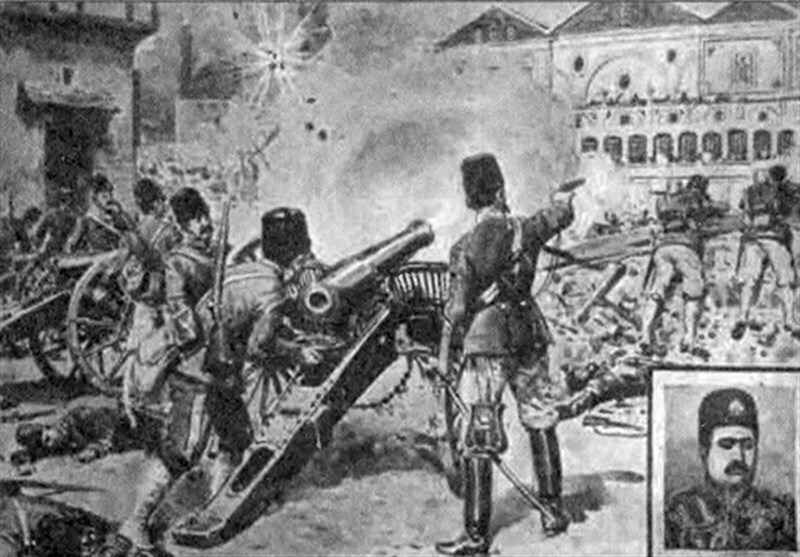
Members of the Majlis rushed to the windows to see what was happening. They were met with the smoke of gunpowder filling the air and the sight of Russian forces marching towards the building. The parliament speaker hurried to the phone booth and tried reaching the King in Bagh Shah. He wanted to know if the monarch was behind the attack and asked him to pull back the cossack army. Before he could connect with the monarch, a cannon strike severed the phone lines.
The Cossacks killed and injured those protecting the building. After firing their canons at the parliament they started occupying the building. The members ran for their lives. Some hid within the corners of the chamber. Some decided to take shelter in nearby buildings and foreign embassies and others left Tehran altogether. Those who ran got shot, those who hid got arrested and others went into self-imposed banishment.
By the end of the day, the parliament’s building was in ruins. The era of constitution and democracy in Iran had come to a swift end.
Shattered Democracy: Aftermath of the Attack
After the bombardment of the parliament, Mohammad Ali Shah and his army began a campaign of cleansing the entire country of its most radical activists. They began arresting all the constitutionalists and journalists who were vocal critics of the Qajar dynasty. The Constitutionalists were determined to fight back, but the odds were stacked against them.
The opposition had little to fight with; they were scattered, disorganized, and lacked the military support of the Qajar forces. Their shield of defence was no match against the unrelenting waves of attack by the monarchy. Despite these challenges, the constitutionalists refused to give up the fight.
In the city of Tabriz in the Azerbaijan province, they elevated their resistance to new heights.
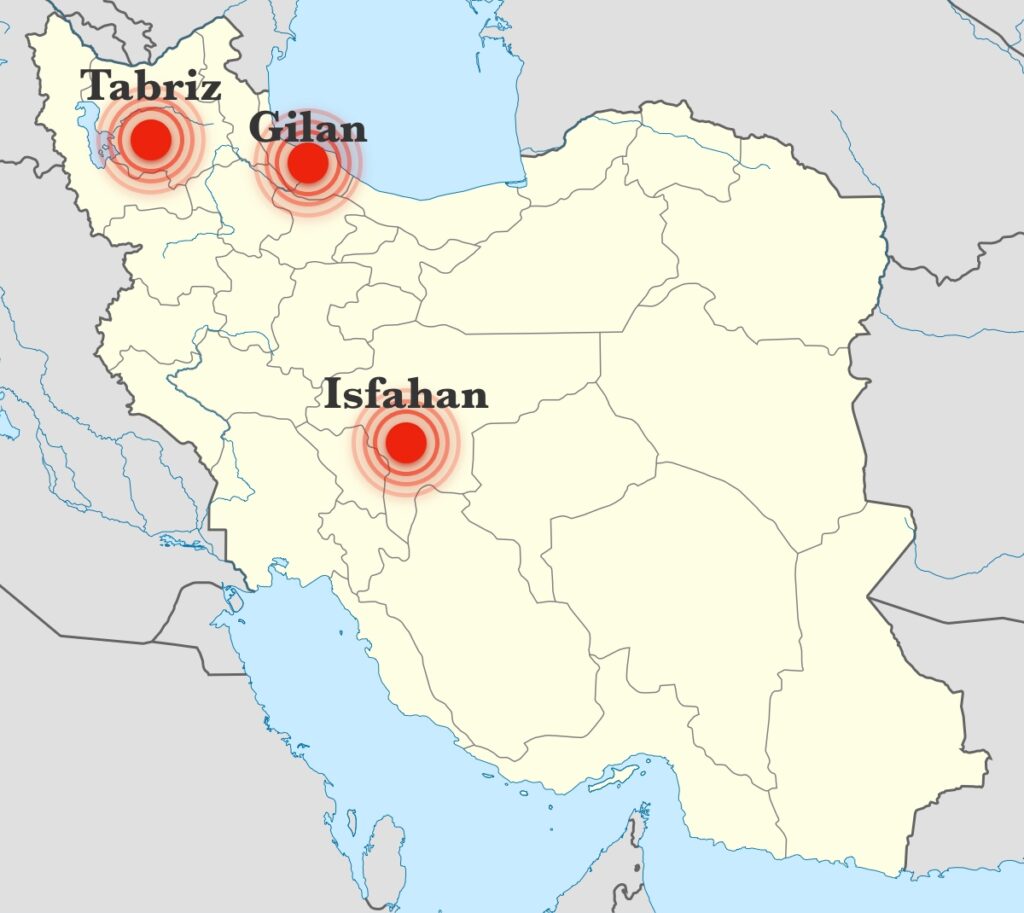
Tabriz Struggles: A Ray of Hope
Even before Mohammad Ali Shah’s siege on parliament, the People of Tabriz knew that the Shah’s uneasy peace with democracy was not meant to last. With this in mind, they began preparing and training themselves for the inevitable moment.
During the Qajar rule, Azerbaijan had become one of the most important parts of Persia. So much so that its rule was always bestowed on the crown prince. Tabriz, the capital of the province, was the second-largest city of the empire. Over 200 thousand people resided in the city. Azerbaijan was in the northwest of Persia, therefore it was critical for trade with the Russians and the Ottomans. It was due to these trades that Iranianians residing in this province developed a sense of modernity and progression.
As the crown prince and before becoming king, Mohammad Ali Mirza was in charge of this province. During this time, he ruled with an iron fist. He prevented any talks of democracy, made sure that the people of Tabriz were unaware of the developments in the capital, and used religion as a tool for oppression and control.
When Mozaffar was on his deathbed, Mohammad Ali was summoned to the capital. In this time, a group of Tabriz activists took on training the constitutionalist fighters for military combat. They created a society of “Constitutionalism Militia.”
The first wave of these fighters were ordinary merchants and traders. Gradually, more aggressive gang members also joined the militia and amped up the strength of the organization.
Sattar Khan and Bagher Khan: Local Heroes
One of these gang members was Sattar Khan. Sattar was born in the villages of Azerbaijan to a mercer family. After the death of his brother on the orders of the provincial ruler, he moved to Tabriz and joined the military forces. The crown prince of his time, Mozaffar al-din, even gave him the honorary title of Khan.
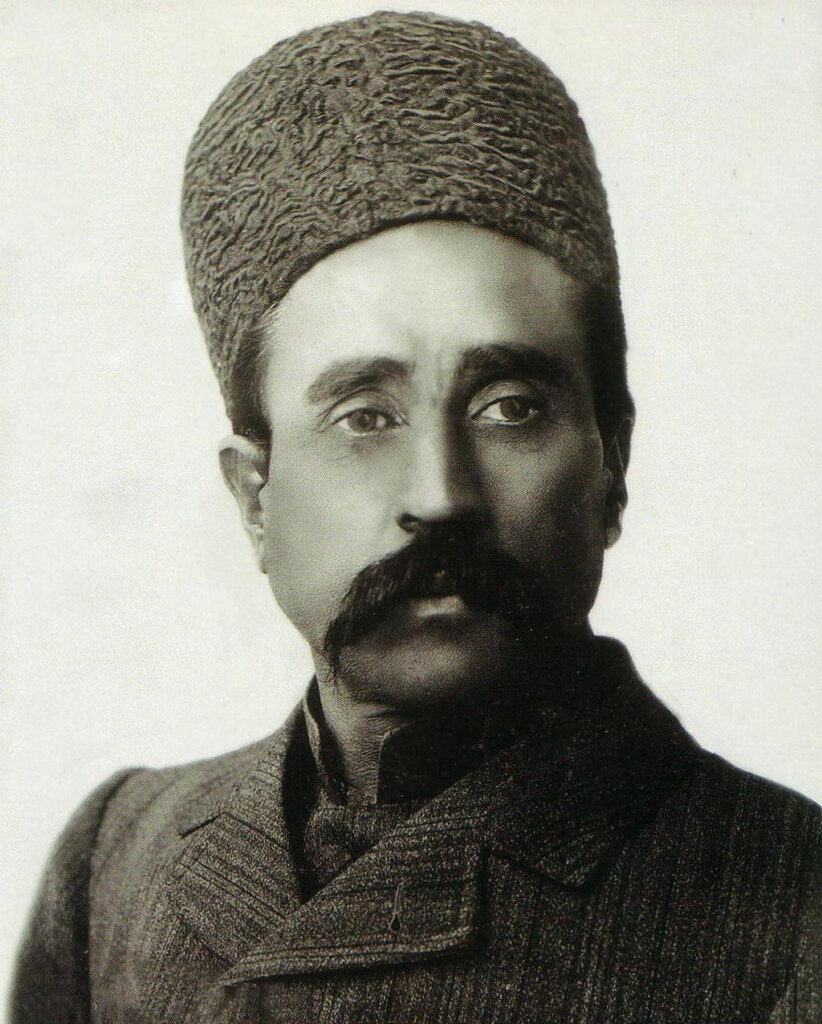
In Persia, this title was used by rulers and high-ranking officials to indicate their status and power. The term Khan was widely used among the nomadic Turkic tribes of Central Asia. It was later adopted by Persian-speaking people and became a symbol of power, respect, and honour.
Despite his title and his status in the Qajar military; after a clash with the royal forces, Sattar Khan was forced into hiding and became a bandit in the region.
Sattar Khan wasn’t a typical bandit. He would take money from wealthy travellers and distribute it to the poor and despite his not-so-noble profession. He soon became one of the most trusted faces in the region.
During Mohammad Ali Shah’s siege on the parliament, the representative of Tabriz was shot and killed. His death triggered a wave of anger in the province. After the successful insurrection, Shah ordered the army to suppress the protests in Tabriz. He sent out a division of armed forces consisting of over 1000 soldiers and 3 cannons to the region to guarantee its obedience.
The people of Tabriz, fearing for their lives, applied pressure on the constitutionalist forces to give in and surrender. Mainly to Bagher Khan, who was the leader of the faction.
Baqir Khan was a key figure leading up to the Iranian Constitutional Revolution. From humble beginnings as a bricklayer, he had become the chief luti of one of Tabriz’s largest areas.
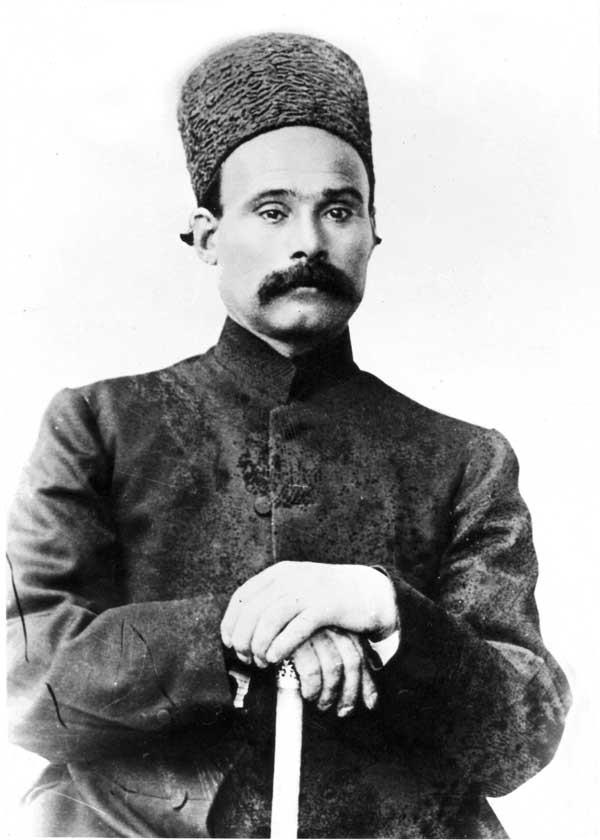
In historical Iran, the term “Luti” originally denoted a strong man or wrestler. Lutis held distinct societal roles, acting as enforcers or muscle-for-hire in urban settings. This community had its own unique subculture, complete with a specific code of honour and rituals. Notably, during the Constitutional Revolution, some lutis played pivotal political roles, serving as street-level forces for various factions.
Rooted in an orthodox background but leaning towards pro-Constitution ideals, Bagher Khan enlisted in the revolutionary militia by 1907. His increasing influence in Tabriz and active participation in early clashes showcased his dedication to the revolution’s cause. By the time of the revolution, he was not just a local figure but a symbol of grassroots commitment to Constitutional ideals.
Fight for Freedom of Tabriz
Baqir Khan, who was obedient to the will of the people, put down his guns. He ordered the display of white flags atop the city’s rooftops.
But even in the face of surrender, the Shah’s army continued to loot, harass, and kill its people. The abuse got so bad that even Tabriz’s radical monarchists became dispirited by the actions of the Shah.
Despite the surrender of constitutionalist forces, one of Tabriz’s neighbourhoods, under the control of Sattar Khan, was still adamant in its fight against the monarchy. In July of 1908, Sattar Khan, along with a handful of his royal soldiers snuck into the Arg of Tabriz. He removed the surrender flags flying on top of the building.
Arg of Tabriz was one of the largest and oldest castles in Iran. Dating back to the Ilkhanid era in the 13th century. The citadel served as the residence of the city’s governors and rulers. The castle was also used as a military fortress, prison, and government building over the centuries.
Stripping the fortress of its white flags sent an unambiguous message to the constitutionalists: the battle was far from concluded.
Sattar Khan’s actions breathed new life into the resistance movement. Bagher Khan and other constitutionalists who had been confined to their homes once again took up arms. They attacked the army’s headquarters, and on July 15th, threw the monarchy’s forces out of town.
By October of that year, Sattar Khan and Baqir Khan had retaken the city of Tabriz and became local heroes. They received the honorary titles of “The people’s commander-in-chief” and “Leader of the people”, but the fight was far from over.
After their initial defeat, the Cossack Brigade regrouped outside of the province and launched a new offensive against constitutionalists. The target of their renewed campaign was the city of Tabriz. But they were once again forced to vacate the region. In the face of defeat, the brigade began the siege of the city in January 1909. By the following month, the monarchist forces had seized control of all entry points to Tabriz. They had effectively isolated its inhabitants and cut off access to vital supplies.
The leaders of the city tried rationing the food while Sattar Khan and Baqir Khan led numerous counterattacks on the besiegers. However, the vast forces of the monarchy were too powerful to overcome. After some time, the supply of food began to run out. Soon starvation and famine became the harsh reality of the province. People were forced to eat grass to survive and soon, began turning on their two local heroes.
They would curse the leaders as they passed on the streets and besmirch them amongst their communities. But the constitutionalist resistance was adamant in its resolve. Their demands were the re-establishment of the parliament, a general pardon for those arrested, and the appointment of a new neutral ruler for their province.
As expected, Shah rejected all three.
In King’s opinion, he had a much better solution for getting out of the crisis.
A Fake Promise: Iran’s Sham Parliament
After his attack on the parliament, Mohammad Ali Shah indicated that the bombardment was not meant to be an end to democracy. He stated the purpose of the siege was to arrest a few journalists hiding in the building. That the destruction of the majlis was an “unforeseen” outcome. Shah signalled his intention to hold another public election for the chamber within a few months. Yet three months after the incident, there were no signs of any upcoming elections.
During this time, notable religious figures such as Sheikh Fazlollah Nuri – the clergy who opposed Majis’ progressive agenda – met with the Shah to plead that constitutionalism was no longer aligned with the guidelines of Shia Islam.
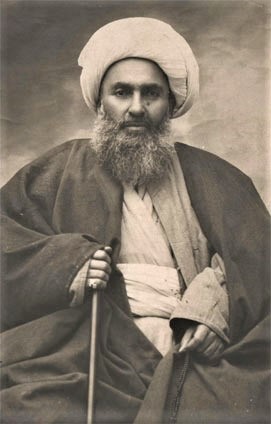
The clergies put together an anti-constitutionalism petition signed by many Iranians from Tehran and other cities. They used this as proof that Iranians were no longer interested in the re-opening of the parliament.
Shah who was already on the fence regarding the expansion of democracy and aspired to the good old days of Nasir Al-Din Shah’s absolute monarchy, agreed to their demand and put a definitive end to the parliament.
Mohammad Ali Shah knew that the anti-constitutionalist clergies and their followers were still a minority in Persia. He was aware that shutting down the parliament would create waves of protests and anger the rest of the population. So, he decided to offer a compromise to satisfy his critics.
He announced that while the parliament would not be re-opened, he was planning on forming a “Grand National Council” in its place. The Grand National Council was a legislative branch that had no power of its own. All the 50 members of the chamber were to be named by the Shah himself. He had the executive right to shut down the council anytime he pleased. All the motions approved by the members had to be certified by the king before being signed into law.
Simply put, the Grand National Council was a sham parliament designed to sway public opinion on Shah’s actions. But even the allies of the monarchy knew that this was a temporary bandaid to a crisis that grew deeper and more serious by the day.
Despite the strong opposition of clergy such as Fazlollah Nuri to democracy, there were still a large number of Shia leaders who supported the constitutional revolution. Inspired by the infamous tobacco movement, they began issuing a ban on paying taxes. They ruled that standing against constitutionalism was the same as fighting the Mahdi or the 12th Imam.
The Northern Alliance
In the north of Iran and in the province of Gilan, people took this call to action to heart. Gilan was a province that bordered the Caspian Sea and was an unofficial neighbour of the Russian Empire. The province had a population of 300 thousand, but the trade with the north had turned the place into one of Iran’s most prosperous states.
After the bombardment of Majlis, Mohammad Ali Shah sent Sardar Afkham to rule the region and make sure any uprising was immediately suppressed. After this appointment, a group of northern constitutionalists under the leadership of Karim Khan of Rasht decided to ask for help from the ‘Social Democrat groups of Caucasus’.
The Caucasus was a region located between Europe and Asia. Situated between the Black Sea to the west and the Caspian Sea to the east. The region was part of the Russian empire and fell under their rule. The Social Democrat group of the Caucasus was formed in the early 1900s as a response to the repressive policies of the Russian Empire, which limited socialist movements in the region. The group’s members were united in their opposition to the Tsarist regime. They sought to establish a socialist society in the Caucasus.
After their request, a group of volunteers arrived at Gilan and helped the Persian fighters prepare ammunition such as hand bombs and train for battle.
Once the training was complete, with the help of the Russian volunteers, the northerners, planned an elaborate skim to stand against the monarchy.
In February 1909, a series of merchants and religious activists, organized by Mirza Kuchak Khan, protested the rule of Sardar Afkham in Gilan.
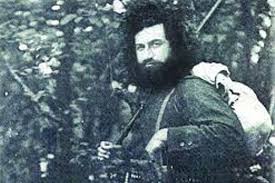
Afkham sent forces to investigate the protests and to scatter the mob. They didn’t know that this protest was just a red herring designed to distract the army from the main plan.
While the army was busy with the protests, a series of armed forces, led and trained by the Caucasus social democrats attacked the central parts of Rasht, the capital of Gilan, killed Sardar Afkham, and took back the city within hours.
Once the province was secured, the revolutionaries of Gilan decided to expand their presence. In the very same month, they created an organization called “the Secret Society of Sattar”. Named after the popular fighter in Tabriz, the group began to militarize and get ready for their next step.
The battle for Gilan was over, but the fight for constitutionalism was still going on.
The ultimate prize, the very soul of the nation, hung in the balance.
The only way to end the never-ending struggle was by conquering the most possessed prize of the land. The Gilan independent army was now aiming to capture Tehran.
Russian Invasion of Tabriz
Whilst Gilan was preparing for their big attack, Tabriz was still under the siege of capital forces. With more people dying every day due to famine and sickness.
The Russian Empire didn’t seem too happy about this prolonged crisis in the province.
As previously discussed, the Anglo-Russian Convention of 1907 granted Russia control over northern Iran. Tabriz, a critical trading hub with both Russia and the Ottoman Empire, was a key part of this territory. The city’s siege had effectively halted trade, impacting the many Russians living in the province. The Russian Empire was keen on solving this crisis as fast as possible.
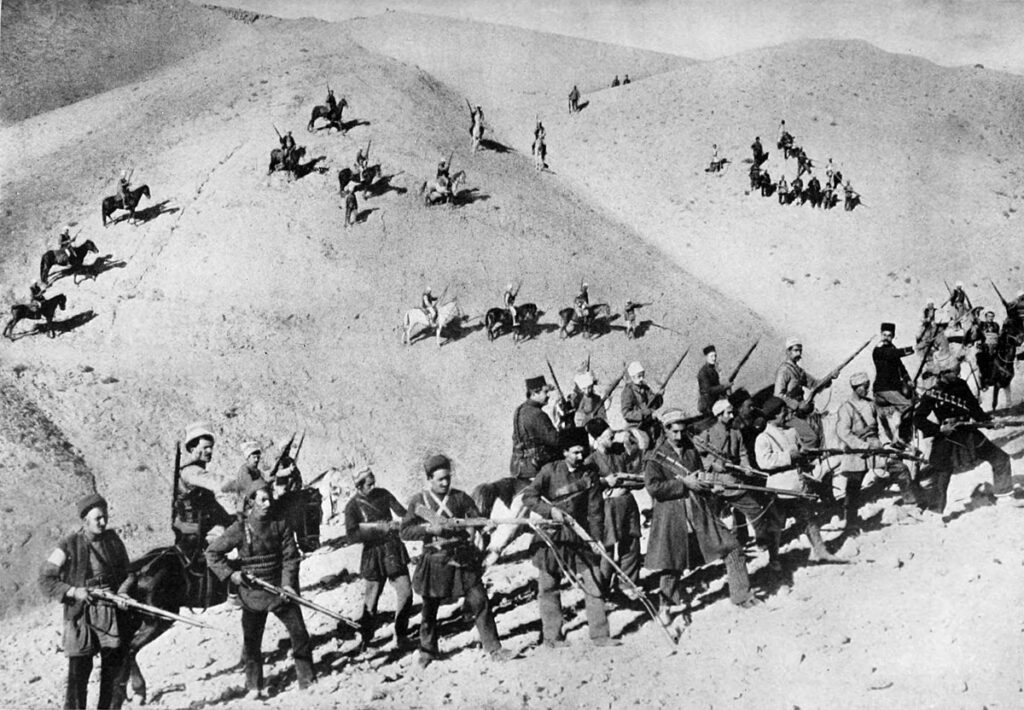
In April 1909, Russian forces crossed the Iranian border and advanced toward Tabriz. They reopened the city’s supply lines and lifted the siege without addressing any of the demands. Given all the turmoil and the desperation of the people for normalcy, an unspoken ceasefire emerged as all parties took some time to recover and regroup.
Despite this stalemate, the resistance of Azarbayjan province became a ray of hope for other regions of the country. It inspired the nationalist fighters to keep on fighting for the cause.
Liberating Isfahan: Rise of the Bakhtiary Riders
One of these resistance groups was the Bakhtiarys of Southwestern Iran. The Bakhtiarys were one of the largest nomadic tribes in the country. They were famous for their horsemanship and were often depicted in Iranian art and literature as fierce and courageous warriors.
After the attack on the parliament, a few minor branches of this tribe sided with the monarchy and even helped with the attack on Tabriz. But the remaining members of the tribe, headed by Samsam al-Saltane, decided to take the side of the nationalists.
In late December, after receiving calls for aid from the citizens of Isfahan, the Bakhtiary riders gathered forces and embarked on Persia’s historical city to liberate it from the forces of Mohammad Ali Shah.
The ruler of Isfahan wanted to quash the conflict before the cavalry arrived. He directed his military to storm Shah’s mosque, where a significant number of constitutionalists had sought refuge. In response, the resistance fortified the mosque’s entrance and took positions on the roof. Firing at the approaching army from elevated vantage points. Thwarted in their attempt to breach the mosque, the army shifted focus to attacking the bazaar and other revolutionary strongholds.
Before long, the entire city was transformed into a war zone. The relentless sound of artillery fire became a haunting backdrop for the residents, and the smell of gunpowder permeated the air. In the heart of the city, the alleys were filled with smoke. Soon, finding a way around the town square became a hurdle of its own.
On January 2nd, 1909, with the fighting still dragging on, the approaching chant of the Bakhtiary tribe was heard near the city entrance. The earth was shaking under the trot of the horses. Soon the sight of the Bakhtiary army became visible through the dust.
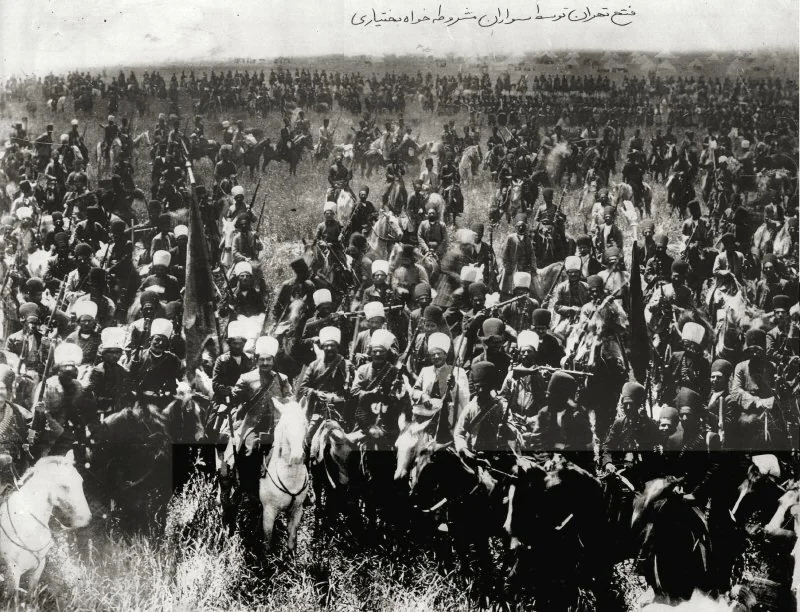
The riders rushed to the city and took back control of the town square, bazaar, and other significant spots. The Shah appointed ruler of the city, who saw defeat as an inevitable reality, escaped and took refuge in the British consulate.
Very soon, Isfahan was liberated by the Bakhtiarys and the resistance forces breathed a sigh of relief.
Battle of Tehran: The Ultimate Fight for Freedom
After the news of the battle reached Tehran, Mohammad Ali Shah asked the pro-monarchy Bakhtiary clans to gather an army, go back to Isfahan and retake the city. But the Bakhtiarys, tired of the in-house fighting with their own tribe, refused the order and scattered in the regions of Kashan.
In Isfahan, the other branch of Bakhtiary forces, ceded control of the city to its populace, inviting the constitutionalists to select their own leader. When word of the northern army’s march toward Tehran reached Isfahan, the Bakhtiary troops were galvanized.
If the army of the north wanted to capture the capital, their southern compatriots would join them in arms and help them save democracy.
As the riders left the newly liberated Isfahan, they knew that they were marching toward the most important fight of their lives. The ultimate faceoff with the house of Qajar and the showdown that would shape the future of their country.

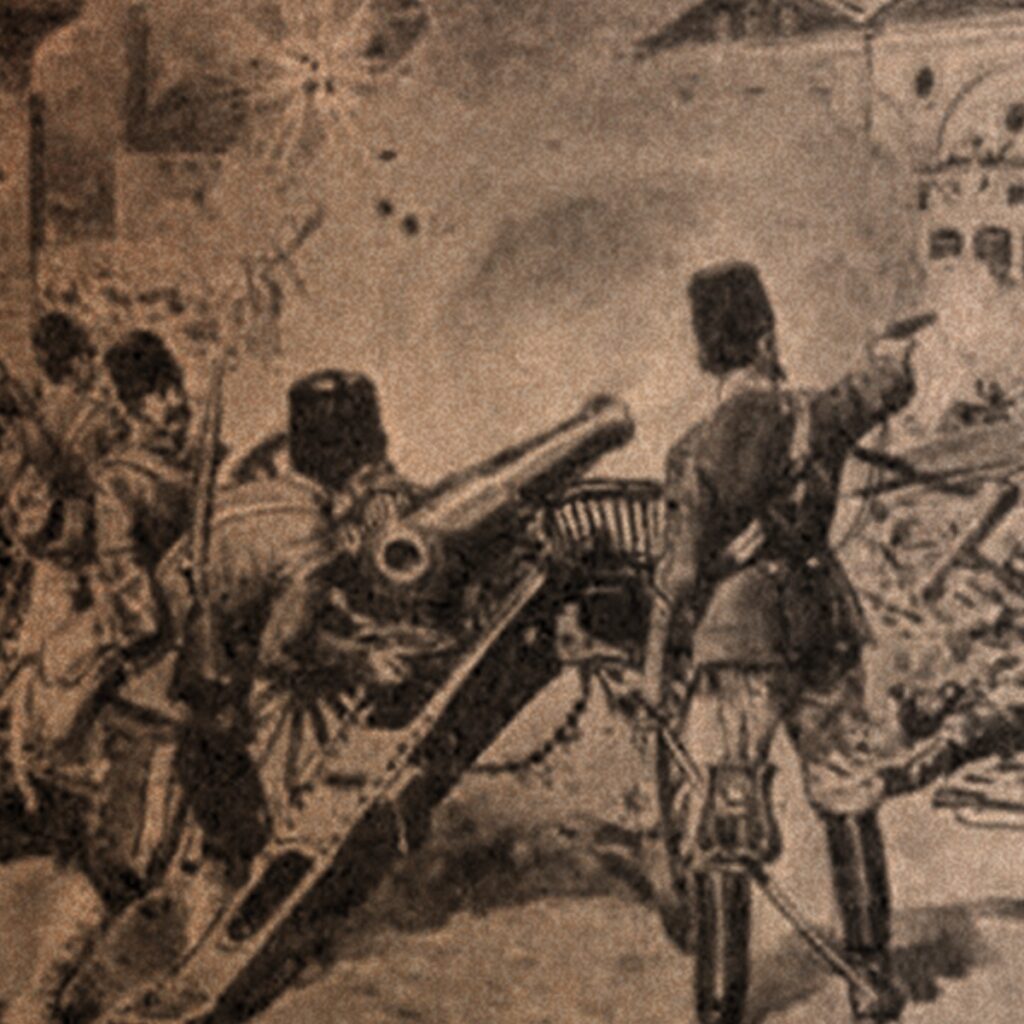
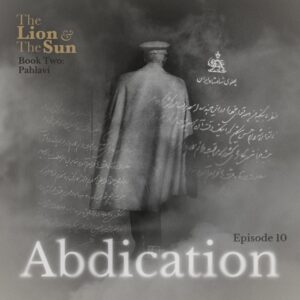
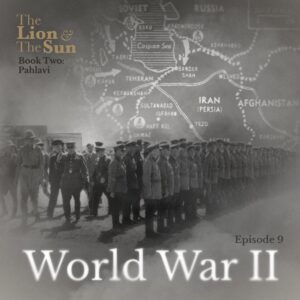

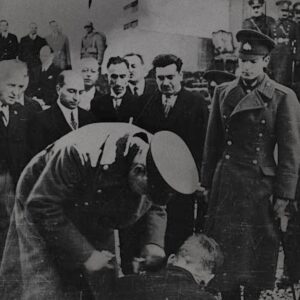
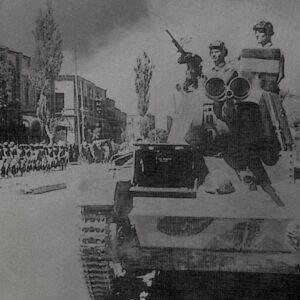
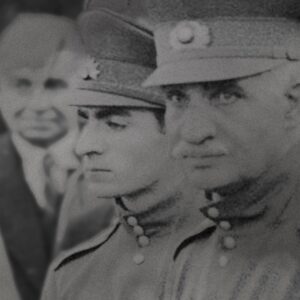
One Response